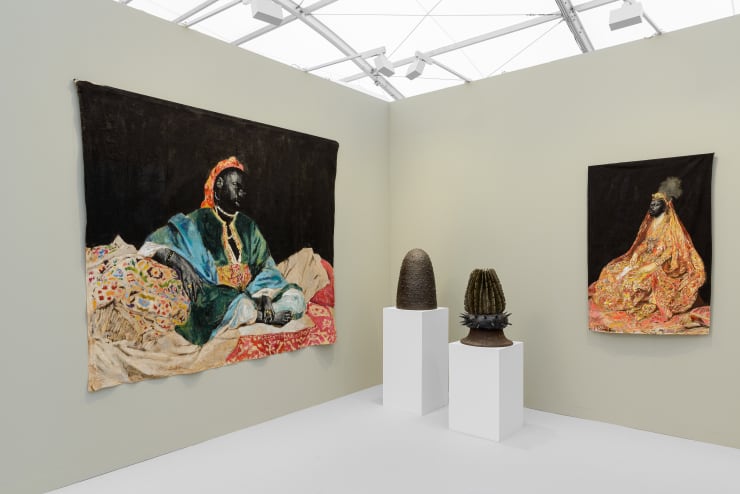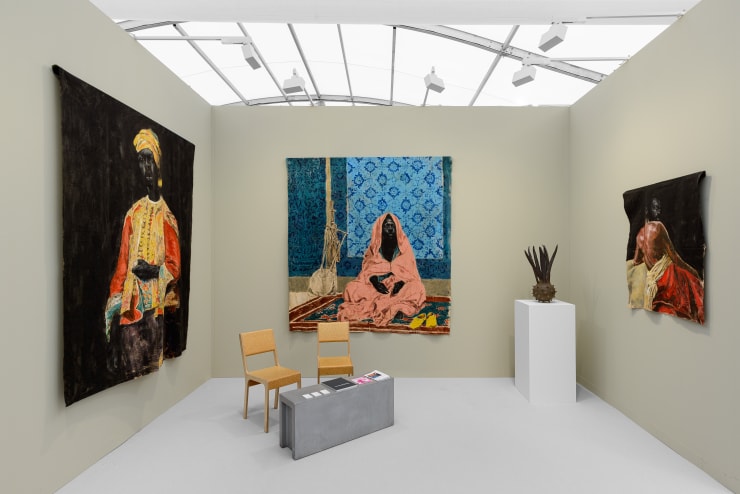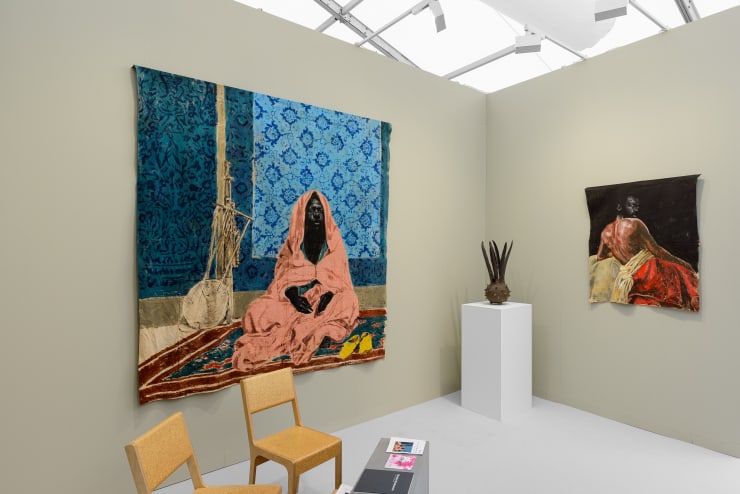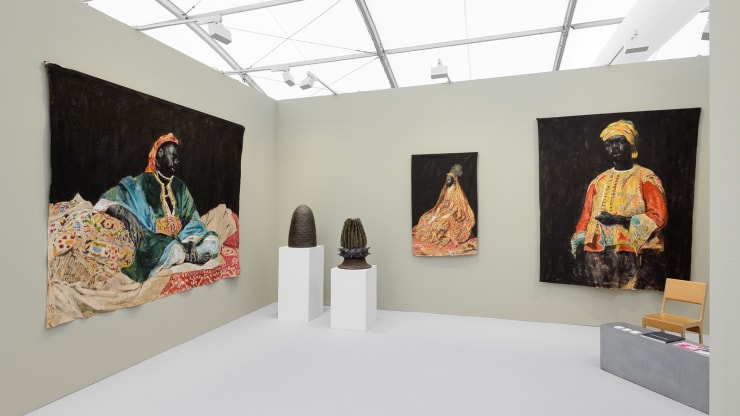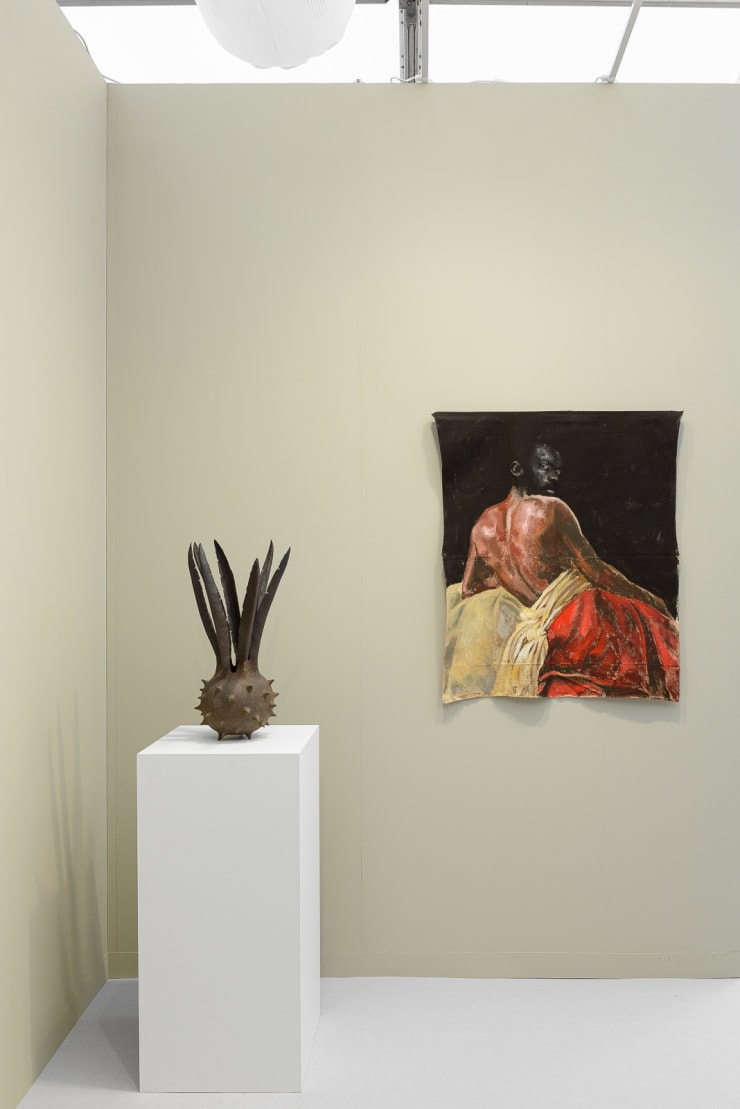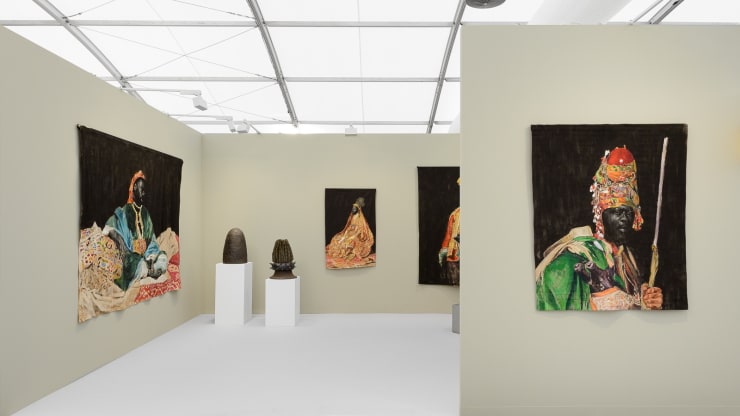For the first edition of Paris + by Art Basel, Galerie Cécile Fakhoury (Abidjan, Dakar, Paris) presents a personal exhibition by Roméo Mivekannin.
Beninese artist born in 1986, now based in France, Roméo Mivekannin plays with the invisible and the hidden. Through conceptual means, Mivekannin seeks to ward off the relationships of domination that persist in our collective representations, and to reclaim personal and collective memories that were stolen.
A group of strong and original artworks will be unveiled, in a dialogue between a series of paintings on free canvas inspired by European iconography and an immersive installation summoning West African spiritualities.
The new series of paintings on free canvas are inspired by Orientalist paintings, an artistic movement born in Europe in the 19th century, they are the example of stereotypes built by the Western gaze, between contempt, fantasy and fascination. This series follows on from the “Modèle Noir” and “Barnum” series, presented at the gallery in our exhibition spaces in Abidjan and Dakar. Mivekannin is betting on reclaiming this iconography and moves from a suffered gaze to a chosen gaze. The aesthetics of the paintings presented says a lot about orientalist essentialism, between the greediness of the colors, the eroticism, the mannerism of the costumes and the fantasized luxury of the sets. Roméo Mivekannin takes up these same codes, adding to them on a case-by-case basis a form of irony coming in large part from the inclusion of his self-portrait in each of the works, thus operating a subversion in the balance of power. The Other is no longer just watched and objectified, he in turn watches the voyeur and thus demands a relationship of equality through his gaze.
The ceramic works presented alongside this body of painting are also a variation on West African visual and spiritual culture. These sculptures are part of a certain conceptual and aesthetic line based on the color black that Roméo Mivekannin developed throughout his first series. These paradoxical forms, closed containers, threatening and attractive, draw as much on the forms of a Beninese tradition of ceramics as on contemporary arts. They open the gaze to African ceramics by recalling its multiple, spiritual, mystical content, but also usual, ornamental and linked to human, social and political contexts.

